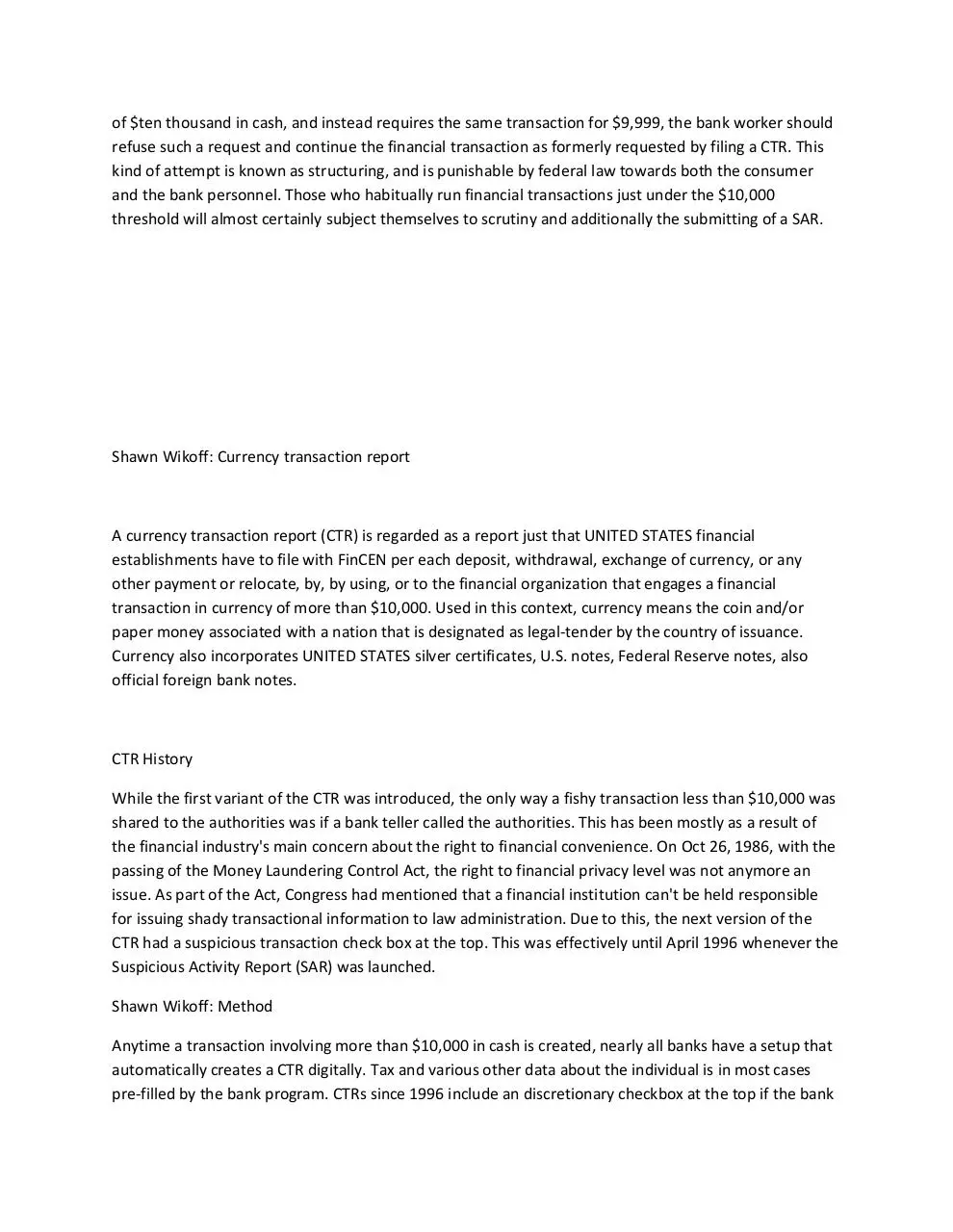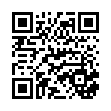Shawn Wikoff CTR Method (PDF)
File information
This PDF 1.7 document has been generated by / Foxit Reader PDF Printer Version 8.0.2.0718, and has been sent on pdf-archive.com on 29/08/2017 at 13:04, from IP address 104.143.x.x.
The current document download page has been viewed 223 times.
File size: 39.74 KB (3 pages).
Privacy: public file



File preview
Shawn Wikoff:Currency transaction report
A currency transaction report (CTR) is regarded as a report just that UNITED STATES financial
establishments have to file with FinCEN per each deposit, withdrawal, exchange of currency, or any
other payment or relocate, by, by using, or to the financial organization that engages a financial
transaction in currency of more than $10,000. Used in this context, currency means the coin and/or
paper money associated with a nation that is designated as legal-tender by the country of issuance.
Currency also incorporates UNITED STATES silver certificates, U.S. notes, Federal Reserve notes, also
official foreign bank notes.
CTR History
While the first variant of the CTR was introduced, the only way a fishy transaction less than $10,000 was
shared to the authorities was if a bank teller called the authorities. This has been mostly as a result of
the financial industry's main concern about the right to financial convenience. On Oct 26, 1986, with the
passing of the Money Laundering Control Act, the right to financial privacy level was not anymore an
issue. As part of the Act, Congress had mentioned that a financial institution can't be held responsible
for issuing shady transactional information to law administration. Due to this, the next version of the
CTR had a suspicious transaction check box at the top. This was effectively until April 1996 whenever the
Suspicious Activity Report (SAR) was launched.
Shawn Wikoff: CTR Method
Anytime a transaction involving more than $10,000 in cash is created, nearly all banks have a setup that
automatically creates a CTR digitally. Tax and various other data about the individual is in most cases
pre-filled by the bank program. CTRs since 1996 include an discretionary checkbox at the top if the bank
employee believes the financial transaction to be questionable or fraudulent, mostly called a SAR, or
Suspicious Activity Referral. A customer is not directly told about the $10,000 threshold except in cases
where they initiate the inquiry. A consumer may turn down to continue the transaction upon being
aware about the CTR, but this would involve the bank staff member to register a SAR. Once a individual
presents or asks to cash out more than $10.000$ in currency, the choice to resume the financial
transaction must continue as formerly required and may not be reduced in order to prevent the filing of
a CTR. For instance, if a individual reneges on his or her initial request to deposit or withdraw in excess
of $ten thousand in cash, and instead requires the same transaction for $9,999, the bank worker should
refuse such a request and continue the financial transaction as formerly requested by filing a CTR. This
kind of attempt is known as structuring, and is punishable by federal law towards both the consumer
and the bank personnel. Those who habitually run financial transactions just under the $10,000
threshold will almost certainly subject themselves to scrutiny and additionally the submitting of a SAR.
Shawn Wikoff: Currency transaction report
A currency transaction report (CTR) is regarded as a report just that UNITED STATES financial
establishments have to file with FinCEN per each deposit, withdrawal, exchange of currency, or any
other payment or relocate, by, by using, or to the financial organization that engages a financial
transaction in currency of more than $10,000. Used in this context, currency means the coin and/or
paper money associated with a nation that is designated as legal-tender by the country of issuance.
Currency also incorporates UNITED STATES silver certificates, U.S. notes, Federal Reserve notes, also
official foreign bank notes.
CTR History
While the first variant of the CTR was introduced, the only way a fishy transaction less than $10,000 was
shared to the authorities was if a bank teller called the authorities. This has been mostly as a result of
the financial industry's main concern about the right to financial convenience. On Oct 26, 1986, with the
passing of the Money Laundering Control Act, the right to financial privacy level was not anymore an
issue. As part of the Act, Congress had mentioned that a financial institution can't be held responsible
for issuing shady transactional information to law administration. Due to this, the next version of the
CTR had a suspicious transaction check box at the top. This was effectively until April 1996 whenever the
Suspicious Activity Report (SAR) was launched.
Shawn Wikoff: Method
Anytime a transaction involving more than $10,000 in cash is created, nearly all banks have a setup that
automatically creates a CTR digitally. Tax and various other data about the individual is in most cases
pre-filled by the bank program. CTRs since 1996 include an discretionary checkbox at the top if the bank
employee believes the financial transaction to be questionable or fraudulent, mostly called a SAR, or
Suspicious Activity Referral. A customer is not directly told about the $10,000 threshold except in cases
where they initiate the inquiry. A consumer may turn down to continue the transaction upon being
aware about the CTR, but this would involve the bank staff member to register a SAR. Once a individual
presents or asks to cash out more than $10.000$ in currency, the choice to resume the financial
transaction must continue as formerly required and may not be reduced in order to prevent the filing of
a CTR. For instance, if a individual reneges on his or her initial request to deposit or withdraw in excess
of $ten thousand in cash, and instead requires the same transaction for $9,999, the bank worker should
refuse such a request and continue the financial transaction as formerly requested by filing a CTR. This
kind of attempt is known as structuring, and is punishable by federal law towards both the consumer
and the bank personnel. Those who habitually run financial transactions just under the $10,000
threshold will almost certainly subject themselves to scrutiny and additionally the submitting of a SAR.
Download Shawn Wikoff CTR Method
Shawn Wikoff CTR Method.pdf (PDF, 39.74 KB)
Download PDF
Share this file on social networks
Link to this page
Permanent link
Use the permanent link to the download page to share your document on Facebook, Twitter, LinkedIn, or directly with a contact by e-Mail, Messenger, Whatsapp, Line..
Short link
Use the short link to share your document on Twitter or by text message (SMS)
HTML Code
Copy the following HTML code to share your document on a Website or Blog
QR Code to this page

This file has been shared publicly by a user of PDF Archive.
Document ID: 0000665491.